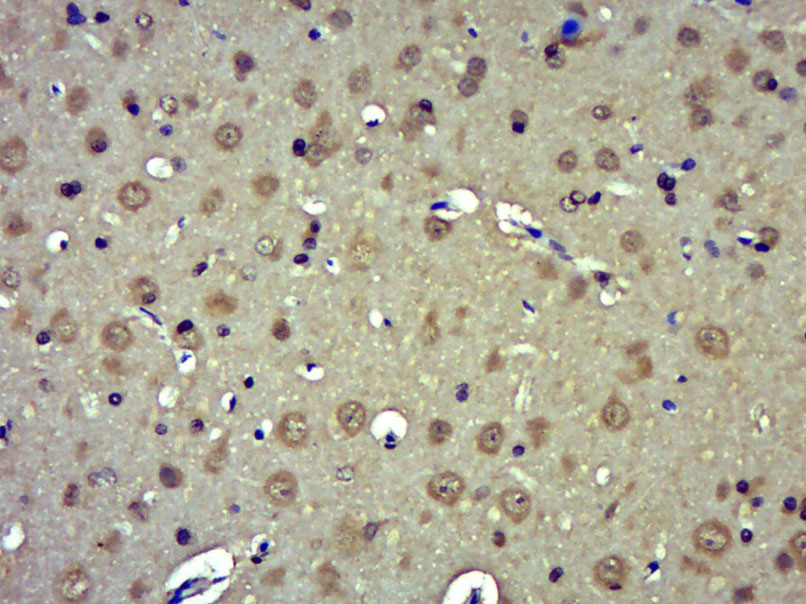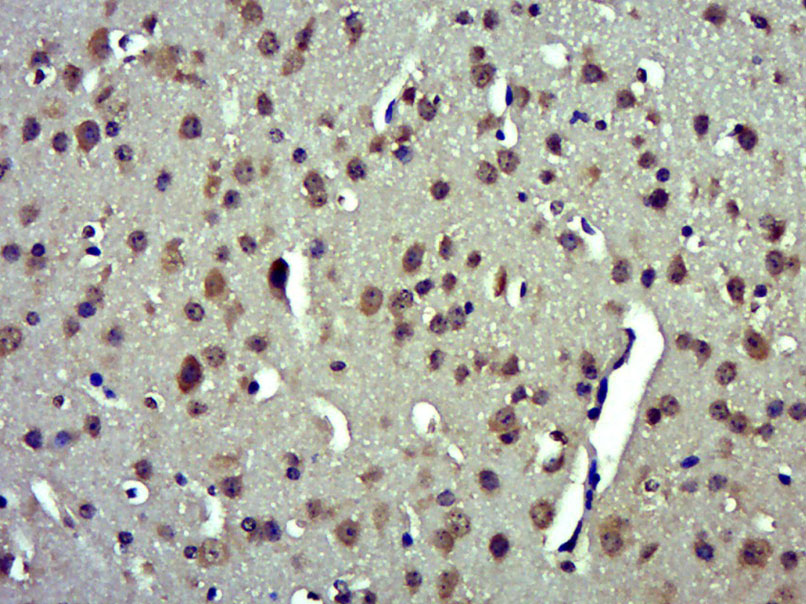
Rabbit Anti-phospho-IP3 receptor (Ser1598)antibody
IP3 receptor (phospho S1598); p-IP3 receptor (phospho S1598); 5-trisphosphate receptor; 5-trisphosphate receptor type 1; DKFZp313E1334; DKFZp313N1434; inositol 1 4 5 triphosphate receptor type 1; Inositol 1 4 5 trisphosphate Receptor Type 1; Inositol 1; I
View History [Clear]
Details
Product Name phospho-IP3 receptor (Ser1598) Chinese Name 磷酸化5-三磷酸肌醇受体1抗体 Alias IP3 receptor (phospho S1598); p-IP3 receptor (phospho S1598); 5-trisphosphate receptor; 5-trisphosphate receptor type 1; DKFZp313E1334; DKFZp313N1434; inositol 1 4 5 triphosphate receptor type 1; Inositol 1 4 5 trisphosphate Receptor Type 1; Inositol 1; InsP3R1; IP3; IP3 receptor; IP3 receptor isoform 1; IP3R 1; IP3R; IP3R1; ITPR 1; Itpr1; ITPR1_HUMAN; SCA15; SCA16; SCA29; Type 1 inositol 1 4 5 trisphosphate receptor; Type 1 inositol 1; Type 1 InsP3 receptor. Product Type Phosphorylated anti Research Area Tumour Cell biology Signal transduction The new supersedes the old Immunogen Species Rabbit Clonality Polyclonal React Species Mouse, Rat, (predicted: Human, Chicken, Dog, Pig, Cow, Horse, Rabbit, Sheep, ) Applications ELISA=1:5000-10000 IHC-P=1:100-500 IHC-F=1:100-500 ICC=1:100-500 IF=1:100-500 (Paraffin sections need antigen repair)
not yet tested in other applications.
optimal dilutions/concentrations should be determined by the end user.Theoretical molecular weight 314kDa Cellular localization cytoplasmic Form Liquid Concentration 1mg/ml immunogen KLH conjugated synthesised phosphopeptide derived from human IP3 receptor around the phosphorylation site of Ser1598: RD(p-S)VL Lsotype IgG Purification affinity purified by Protein A Buffer Solution 0.01M TBS(pH7.4) with 1% BSA, 0.03% Proclin300 and 50% Glycerol. Storage Shipped at 4℃. Store at -20 °C for one year. Avoid repeated freeze/thaw cycles. Attention This product as supplied is intended for research use only, not for use in human, therapeutic or diagnostic applications. PubMed PubMed Product Detail This gene encodes an intracellular receptor for inositol 1,4,5-trisphosphate. Upon stimulation by inositol 1,4,5-trisphosphate, this receptor mediates calcium release from the endoplasmic reticulum. Mutations in this gene cause spinocerebellar ataxia type 15, a disease associated with an heterogeneous group of cerebellar disorders. Multiple transcript variants have been identified for this gene. [provided by RefSeq, Nov 2009]
Function:
Intracellular channel that mediates calcium release from the endoplasmic reticulum following stimulation by inositol 1,4,5-trisphosphate.
Subcellular Location:
Endoplasmic reticulum membrane.
Tissue Specificity:
Widely expressed.
Post-translational modifications:
Phosphorylated by cAMP kinase. Phosphorylation prevents the ligand-induced opening of the calcium channels.
Phosphorylated on tyrosine residues.
DISEASE:
Defects in ITPR1 are the cause of spinocerebellar ataxia type 15 (SCA15) (SCA15) [MIM:606658]. Spinocerebellar ataxia is a clinically and genetically heterogeneous group of cerebellar disorders. Patients show progressive incoordination of gait and often poor coordination of hands, speech and eye movements, due to degeneration of the cerebellum with variable involvement of the brainstem and spinal cord. SCA15 is an autosomal dominant cerebellar ataxia (ADCA). It is very slow progressing form with a wide range of onset, ranging from childhood to adult. Most patients remain ambulatory.
Similarity:
Belongs to the InsP3 receptor family.
Contains 5 MIR domains.
SWISS:
Q14643
Gene ID:
3708
Database links:Entrez Gene: 3708 Human
Entrez Gene: 16438 Mouse
Omim: 147265 Human
SwissProt: Q14643 Human
SwissProt: P11881 Mouse
Unigene: 567295 Human
Unigene: 715765 Human
Unigene: 227912 Mouse
Unigene: 2135 Rat
Product Picture
Bought notes(bought amounts latest0)
No one bought this product
User Comment(Total0User Comment Num)
- No comment





 +86 571 56623320
+86 571 56623320
 +86 18668110335
+86 18668110335

